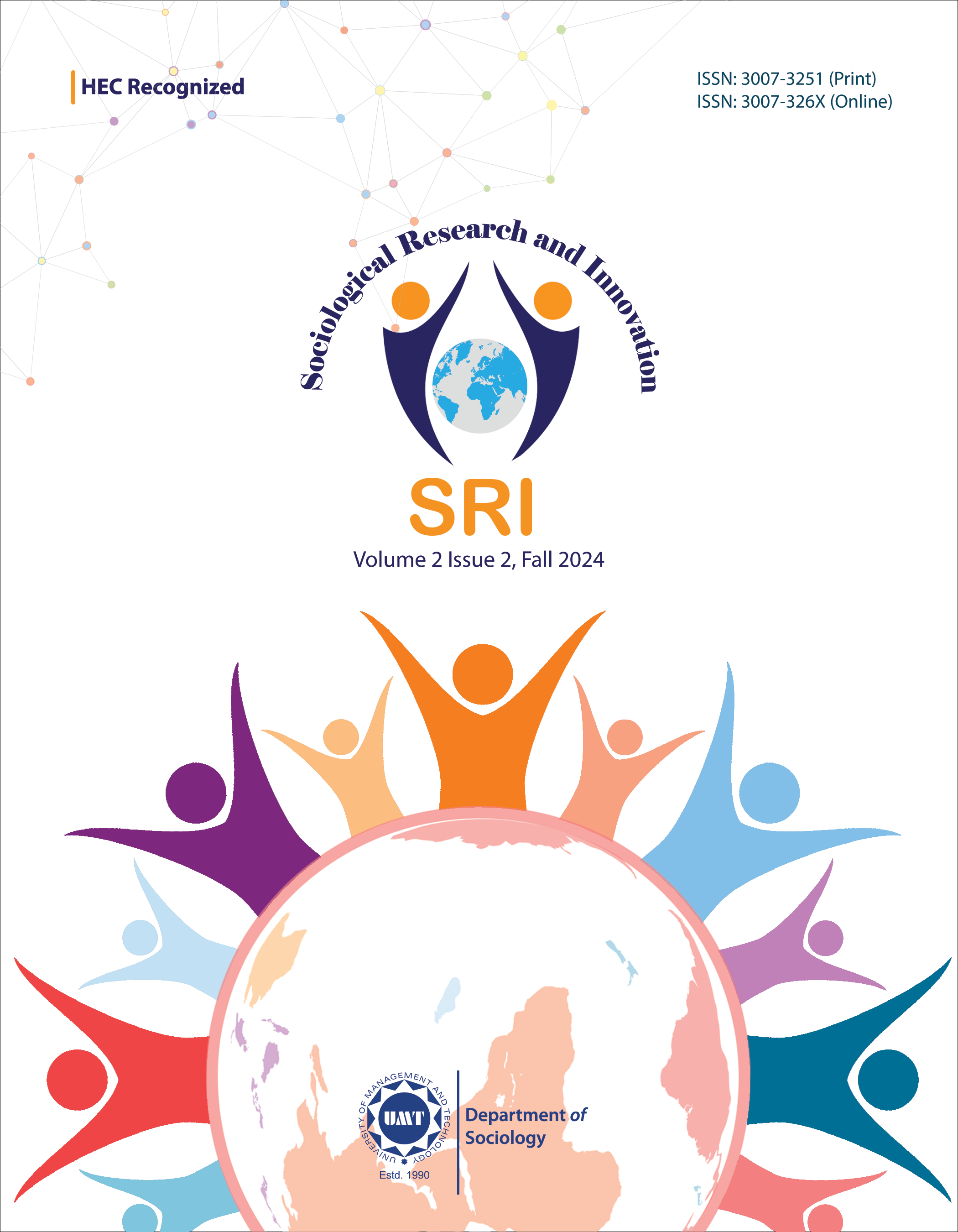Barriers to Inclusion: Challenges Faced by Physically Impaired Students in Higher Education Institutions of Bahawalpur, Pakistan
Abstract
 Abstract Views: 0
Abstract Views: 0
This research is directed at supporting and ensuring equal access to higher education services for physically impaired individuals and mitigating the gap between the acquisition of higher education and disability. For this purpose, it examines the difficulties encountered by physically disabled students in Bahawalpur's higher education institutes (HEIs), concentrating on the institutional obstacles that restrict their social and academic integration. The cluster sampling method was utilized in this study. A total of 100 respondents from the Islamia University of Bahawalpur studying at the B.S. level were chosen. For a better understanding of the subject matter, six themes were developed including the experiences of isolation and loneliness and the experiences of discrimination and discriminatory behavior. The absence of suitable study materials, poor physical accessibility, and a lack of knowledge among stakeholders about the rights of students with impairments were identified as the main problems. Accessible restrooms and ramps are basic facilities that many universities lack, while educational materials in Braille and audiobook formats are frequently out of stock. The findings emphasize how social marginalization has an emotional and psychological effect on students, making them feel more stressed and alone. Steps to improve the situation include mandatory training for teachers and staff to raise awareness about disability rights, strengthening the physical infrastructure for accessibility, and ensuring the availability of accessible academic materials.
Downloads
References
Algolaylat, A. S., Alodat, A. M., Muhidat, M. A., & Almakanin, H. A. (2023). Perspectives of students with disabilities on inclusive education challenges in higher education: A case study of a Jordanian University. TEM Journal, (1), 406–413
Amoah, C., Bamfo-Agyei, E., & Simpeh, F. (2023). Disable access compliance to university infrastructure: built environment students’ perceptions. Property Management, 41(5), 681–697. https://doi.org/10.1108/PM-01-2023-0004
Bhuvaneswari, M., Selvaraj, C. I., Selvaraj, B., & Srinivasan, T. (2016). Assessment of psychological and psycho-physiological problems among visually impaired adolescents. Iranian Journal of Psychiatry and Behavioral Sciences, 10(1), e3895. https://doi.org/10.17795/IJPBS-3895
Bourdieu, P. (2011). “The forms of capital” (1986). In I. Szeman & T. Kaposy (Eds.), Cultural theory: An anthology (pp. 81–93). John Wiley & Sons.
Chang, E., & Johnson, A. (2021). Living with chronic illness and disability: Principles for nursing practice. Elsevier.
Crenshaw, K. (2021). Demarginalizing the intersection of race and sex: A black feminist critique of antidiscrimination doctrine, feminist theory and antiracist politics. Law and Society, 108, e465.
Goffman, E. (2009). Stigma: Notes on the management of spoiled identity. Simon & Schuster.
Green, V. A., Tse, E. J., Kan, U., & Clark, M. (2023). Identifying effective support for students with disabilities who have experienced bullying. Journal of the Australian and New Zealand Student Services Association, 31, 19–28.
Hitches, E., Woodcock, S., & Ehrich, J. (2023). Shedding light on students with support needs: Comparisons of stress, self-efficacy, and disclosure. Journal of Diversity in Higher Education, 16(2), 205–214. https://doi.org/10.1037/dhe0000328
Iqbal, U. (2023). Review and analysis of Dolmage’s “Academic Ableism”. Journal of Disability Studies in Education, 4(1), 127–130. https://doi.org/10.1163/25888803-bja10019
Kılıç, M. A. (2023). Discussing social exclusion and inclusion from design perspective: The Case of İzmir Sea Project (Publication No. 31539513) [Doctoral dissertation, Izmir Institute of Technology]. ProQuest Dissertations & Theses.
Lalit, S. (2021, December 13). Students with disabilities: Most common barriers and difficulties. We Capable. https://wecapable.com/students-with-disabilities-barriers-difficulties/
Leaf Complex Care. (n.d.). Physical disability: Types & causes. Retrieved May 9, 2024, from https://leafcare.co.uk/blog/physical-disability/
Rath, V. (2024). Embracing the disruptive voice. In R. Rose & M. Shevlin (Eds.), Including voices: Respecting the experiences of people from marginalised communities (pp. 91–102). Emerald Publishing Limited.
Reynell, R. (1970). A pine of disability. Foreman & Co.
Sajjad, W. (2023). Exploring disability as an epistemic inquiry: A critical perspective. The Criterion: An International Journal in English,14(2), 371–380.
Shaw, A. (2024). Inclusion of disabled Higher Education students: why are we not there yet? International Journal of Inclusive Education, 28(6), 820–838. https://doi.org/10.1080/13603116.2021.1968514
Spalding, H. (2023). Visible disabilities and students in higher education: Equality and fairness and the reality of inclusion [Doctoral dissertation, University of Wales Trinity Saint David]. Books & Beyond. https://repository.uwtsd.ac.uk/id/eprint/2855
Šušterič, N. (2024). Social exclusion/Inclusion. In M. Sardoč (Ed.), Handbook of equality of opportunity (pp. 1–23). Springer International Publishing.
Copyright (c) 2024 Muhammad Rameez Mohsin, Rizwan ul Haq Aamir, Salman Khan

This work is licensed under a Creative Commons Attribution 4.0 International License.


